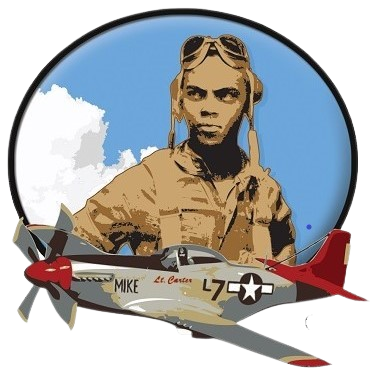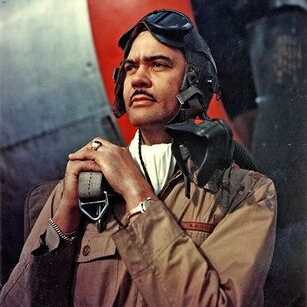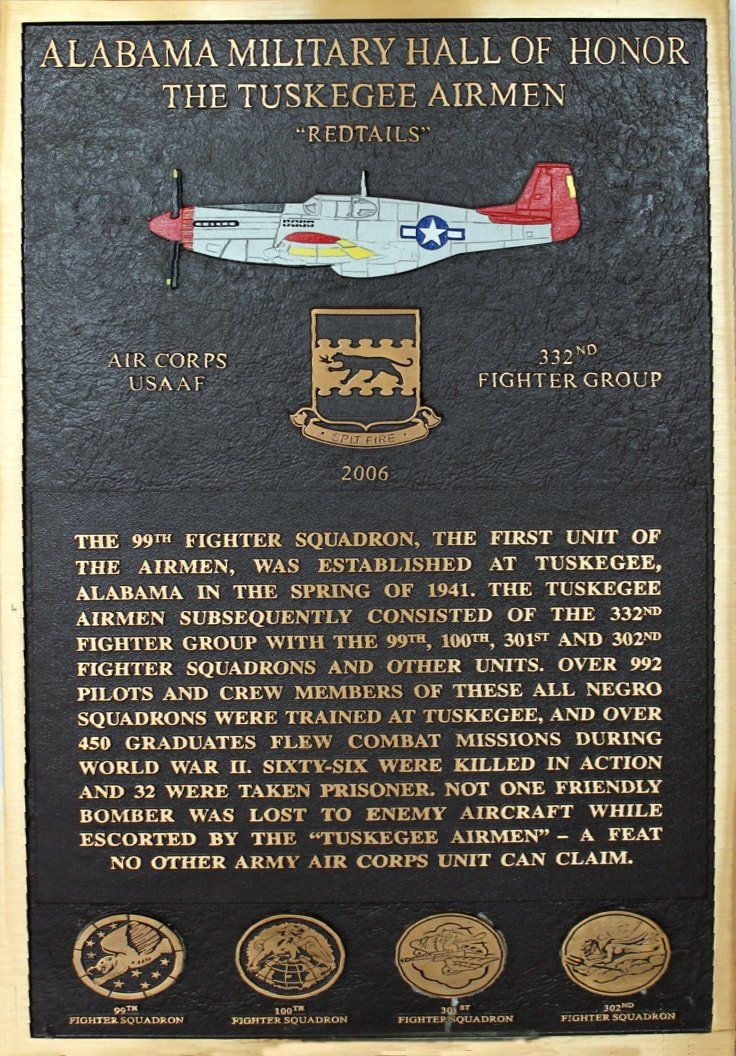The Brave Tuskegee Airmen
Multiple Donor Levels | Military Hangar Tours | Accepting Volunteers
- Multiple Donor Levels
- Military Hangar Tours
- Accepting Volunteers
Learn More About These Phenomenal Heroes
The first African-American military pilots became known as the " Red Tails " after they wore striped tails and began their flight training in the Army's PT-17 Stearman bi-plane. Their flying adventure began at Moton Field , in Tuskegee, AL where the Army Air Corps began a military "experiment" to see if Negroes could be trained to fly combat aircraft. We invite you to come share their adventure!! The video below is narrated by Morgan Freeman and is brought to you by PilotMag.
The Tuskegee Airmen were the first African-Americans to serve as military aviators in the U.S. Armed Forces. They flew with distinction during World War II, and even though they were subject to racial discrimination both at home and abroad, the 996 pilots and more than 15,000 ground personnel who served with all African-American units would be credited with some 15,500 combat sorties and earn over 150 Distinguished Flying Crosses for their accomplishments. The highly publicized successes of the Tuskegee Airmen helped pave the way for the eventual integration of the U.S. Armed Forces in 1948 under President Harry Truman.
African Americans fought against fascism overseas and white supremacy at home in WWII. No other group during the war battled two such unique enemies, so these airmen made better use of the opportunities the war created. They essentially laid the groundwork for the civil rights movement.
These African-American fighters and bomber groups fought their way into the U.S. Army Air Forces and then battled Hitler’s Luftwaffe over in Europe as well as the Jim Crow forces at postings all over the USA.
The 332nd flew bomber escorts. In March 1945, Benjamin O. Davis, Jr. led the 332nd on a 1,600-mile round-trip escort mission to Berlin. The Tuskegee Airmen never lost a bomber during that mission in spite of an onslaught of the latest and fastest enemy German planes. The 332nd won a Distinguished Unit Citation for the mission.
Facts About the Tuskegee Airmen
- The Tuskegee Airmen were dedicated and determined young men who volunteered to become America's first African-American military airmen
- Aviation cadets were only accepted for training if they possessed the physical and mental qualifications - they then became pilots, bombardiers, or navigators
- The U.S. Army Air Corps awarded Tuskegee University a contract to help train America's first Black military aviators - it had already invested in the development of an airfield, had a proven civilian pilot training program, and its graduates performed highest on flight aptitude exams
- Moton Field is named after Tuskegee University's second President, Dr. Robert R. Moton who served with distinction from 1915-1935 - The Airmen were deployed during the administration of president Dr. Frederick Douglas Patterson (1935-1953)
- The African-American 332nd Fighter Group consisted of four fighter squadrons, the 99th, the 100th, the 301st, and the 302nd.
- Around 1,000 Black pilots were trained at Tuskegee from 1941-1946,
- The Airmen succeeded in escorting bombers during WWII and had one of the lowest loss records of all the escort fighter groups - they were in high demand for their services by the allied bomber units - this is a record unmatched by any other fighter group
- Before joining the 332nd Fighter Group, the 99th Squadron distinguished itself by being awarded two Presidential Unit Citations (June-July 1943 and May 1944) for outstanding tactical air support and aerial combat in the 12th Air Force in Italy
- The 332nd Fighter group received the Presidential Unit Citation for the longest bomber escort mission to Berlin on March 24, 1945 - the Tuskegee Airmen (then known as the 'Red Tails') destroyed three German ME-262 jet fighters and damaged five additional jet fighters during this mission
- The 332nd Fighter Group distinguished itself in June 1944 when two of its pilots flying P-47 Thunderbolts discovered a German destroyer in the harbor of Trieste, Italy
- The bomber escort cover provided by the 332nd "Red Tail" fighters often stopped enemy fighter pilots from attacking bombers escorted by the 332nd Fighter Group
- C. Alfred "Chief" Anderson earned his pilot's license in 1929 and became the first African American to receive a commercial pilot's certificate in 1932 as well as make a transcontinental flight
- Anderson is well known as the pilot who convinced Eleanor Roosevelt to encourage her husband FDR to authorize military flight training at Tuskegee
- President Harry Truman enacted Executive Order No. 9981 which directed quality of treatment and opportunity in the United States Armed Forces ultimately leading to the end of racial segregation in the U.S. military forces
- In 1998, the U.S. Congress authorized $29 million to develop the Tuskegee Airmen National Historic Site with the University, Tuskegee Airmen Inc., and the National Park Service serving as partners in its development - a mere $3.6 million has been appropriated for the Site's implementation ever since
These facts are provided by Tuskegee Airmen Inc. and the Tuskegee University Office of Marketing and Communications .
The Tuskegee Airmen were credited by higher commands with Awards and decorations that include:
- Over 150 Distinguished Flying Crosses to 95 Airmen; Captain William A. Campbell was awarded two.
- 14 Bronze Stars (Fourth highest military decoration)
- 744 Air Medals
- 1578 combat missions, 1267 for the Twelfth Air Force; 311 for the Fifteenth Air Force
- 179 bomber escort missions, with a good record of protection, losing bombers on only seven missions and a total of only 27, compared to an average of 46 among other 15th Air Force P-51 groups
- 112 enemy aircraft destroyed in the air, another 150 on the ground, and 148 damaged
- 950 rail cars, trucks, and other motor vehicles destroyed (over 600 rail cars)
Become a donor to help preserve the legacy!
FRIENDS OF TUSKEGEE AIRMEN NATIONAL HISTORIC SITE
Please Mail Donations to
PO Box 831199 Tuskegee, AL 36083




Share On: